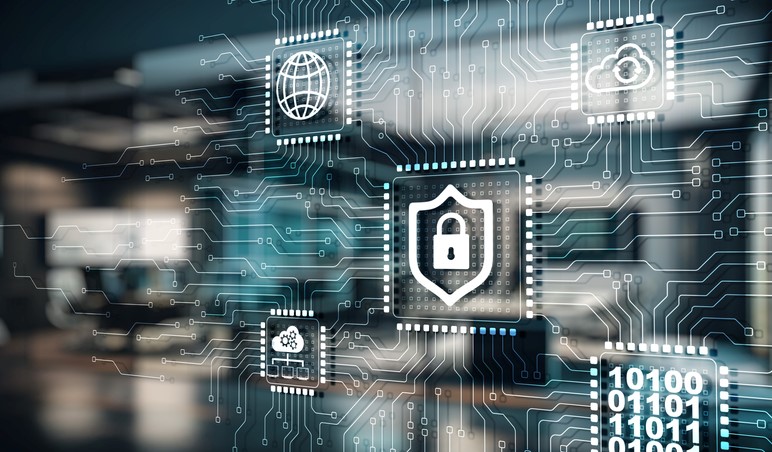Cybersecurity Round-Up: Key Lessons and Takeaways for IT Professionals
Updated on November 28, 2023, by ITarian

Published November 27th, 2023 by Editorial Staff
As we bid farewell to 2023, it’s crucial to pause and analyze the cybersecurity arena of the year gone by. This period has been particularly notable for its challenges and invaluable learning experiences in cybersecurity. This comprehensive analysis aims to dissect the significant cybersecurity events of 2023, extracting pivotal lessons and insights valuable for IT professionals. More than a mere look back, these reflections serve as a roadmap for bolstering our digital defenses in the years to come.
The Evolution of Phishing Attacks
A remarkable trend of 2023 was the sophisticated evolution of phishing attacks. Cybercriminals have adeptly transcended traditional email scams, employing more intricate methods like deepfake technology and AI-powered content, making their deceptions alarmingly convincing.
Key Lesson: Vigilance coupled with continuous education is indispensable. IT teams must persistently educate employees about emerging phishing tactics and invest in state-of-the-art threat detection systems capable of identifying and mitigating such advanced attacks.
The Escalation of Ransomware Threats
Ransomware has remained a formidable threat throughout 2023, indiscriminately targeting large corporations, small enterprises, and even public infrastructure. A noticeable shift was observed towards more personalized, highly destructive ransomware campaigns.
Key Lesson: Consistent backups and a well-formulated response strategy are paramount. Cultivating a routine of frequent updates and patch management is equally vital to thwart potential vulnerabilities.
Rising Concerns Over Supply Chain Attacks
The year also witnessed a surge in supply chain attacks, where assailants target the weaker links in the supply chain to compromise more extensive networks.
Key Lesson: IT professionals must broaden their cybersecurity vigilance, encompassing their entire network. Conducting systematic security evaluations of third-party vendors and instituting stringent security protocols for supply-chain interactions is critical.
AI’s Role in Cybersecurity
A positive development in 2023 was the increased integration of AI in cybersecurity. AI has been instrumental in detecting anomalies, automating threat response, and foreseeing potential vulnerabilities.
Key Lesson: Integrating AI and machine learning into cybersecurity measures is beneficial. Nonetheless, staying aware of these technologies’ potential misuse by adversaries is essential.
Challenges in Cloud Security
With the increasing shift to cloud computing, cloud security has become crucial. The inherent complexity of cloud environments has rendered them attractive targets for cybercriminals.
Key Lesson: Implementing all-encompassing cloud security strategies is imperative. This encompasses understanding the shared responsibility model in cloud security, ensuring stringent access controls, and persistent monitoring of cloud environments.
Remote Work’s Impact on Cybersecurity
The transition to remote work, expedited by the COVID-19 pandemic, continued to influence cybersecurity in 2023—the merging of personal and professional digital spaces presented unique security challenges.
Key Lesson: Security policies must be tailored to accommodate the realities of remote work. This involves securing home networks, implementing multi-factor authentication, and ensuring remote employees are as conversant with security best practices as their in-office colleagues.
The Necessity of Cybersecurity Governance
The year 2023 underscored the importance of robust cybersecurity governance. Organizations with clear policies, consistent risk assessments, and robust cybersecurity leadership managed incidents more effectively.
Key Lesson: Investing in developing a comprehensive cybersecurity governance framework is essential. This includes regular risk evaluations, establishing clear policies, and fostering a culture prioritizing cybersecurity at all organizational levels.
Global Shifts in Data Privacy Regulations
2023 also witnessed significant shifts in international data privacy regulations. The enforcement of laws like the GDPR in Europe and analogous legislations in other regions has far-reaching implications for organizational data handling practices.
Key Lesson: Keeping abreast of global data privacy regulations and ensuring compliance is crucial. It is essential to understand the nature of the data held, its processing methods, and the legal ramifications of international data transfer.
The Human Element in Cybersecurity
Despite technological advancements, the human element remains a pivotal aspect of cybersecurity. Intentionally and unintentional insider threats continued to pose significant risks in 2023.
Key Lesson: Cultivating a robust security culture within the organization is key. Regular training, transparent communication about security policies, and promoting individual accountability for cybersecurity are vital.
Conclusion
The cybersecurity landscape of 2023 was multifaceted and challenging, yet it offered invaluable lessons for IT professionals. Emphasizing perpetual learning, adapting to evolving threats, leveraging technologies like AI, and maintaining a robust security culture is critical for safeguarding digital assets. As we advance into 2024, the insights and experiences gained from this year will undoubtedly be instrumental in shaping more robust and proactive cybersecurity strategies.